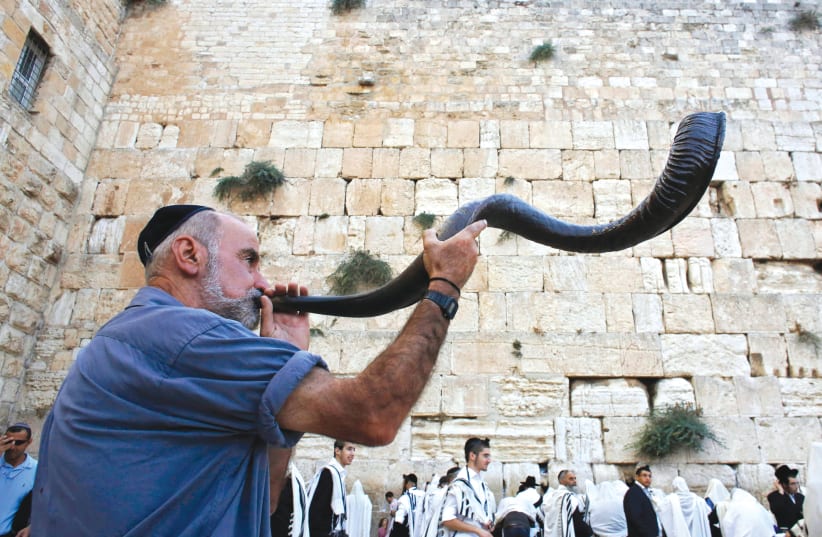Amazingly, the list for Israel is currently empty. Last year, UNESCO officially “inscribed” 31 ICH elements for preservation from around the world, including traditional Korean wrestling, the French art of perfume-making, Jordanian al-Samer wedding rituals, and Jamaican reggae music. Unfortunately, Israel has never submitted any ICH to UNESCO’s list for inscription.
Israel’s recent exit from UNESCO, understandably fueled by the body’s unjust inscription of the Temple Mount and the Cave of the Patriarchs as exclusively Palestinian World Heritage Sites, does not necessarily preclude it from proposing elements to be inscribed in UNESCO’s official list of ICH. The time since Israel’s withdrawal from UNESCO has been a time of reflection, resolve, and reevaluation of Israel’s voice and place in the world.
The following elements of Israeli Intangible Cultural Heritage should immediately be considered for inscription by UNESCO:
1. Shofar. In the biblical period, a ram’s horn, the shofar, was sounded to mark the new moon and the jubilee. It was a call to action marking the beginning of war, and was also employed in the music of the Temple. The shofar is still sounded in Jewish rituals today during the month of Elul, leading up to and on Rosh Hashanah and on Yom Kippur, and serves as a call to religious and spiritual mindfulness.
2. Torah reading. After the Judeans’ return to ancient Israel from exile in Babylonia in the 6th century BCE, Ezra the Scribe instituted public readings of the Torah. This social and religious practice stemmed from hakhel, the gathering of Israelites every seven years to hear the king read from the Law. Since the time of Ezra, Torah reading and cantillation practices have developed in diverse ways in various Jewish communities across the world.
3. Modern Hebrew poetry. With the revival of Modern Hebrew in the late 19th century, a new era of poetry arose. Writers like Hayim Nahman Bialik and Shaul Tchernichovsky made significant contributions to the oral traditions of Israeli society, paving the way for subsequent great poets such as Yehuda Amichai, Nathan Alterman, and Leah Goldberg.
4. Israeli folk dance. Before the Third Aliyah to Mandatory Palestine, the most popular dances were those brought by European immigrants. However, those who moved to Mandatory Palestine after the Third Aliyah developed a new system and culture of Israeli folk dance, incorporating elements of these European dances and contemporary Israeli musical styles. Israeli folk dance became popular in Israel and has since become popular across the world.
5. Khamire wedding ritual. At the end of the traditional Druze three-day wedding, the bride is escorted back to the groom’s home, at which she tacks a small round of dough, the khamire, decorated with flowers and money, onto the entrance of the house. This symbolizes her adherence to the home she will keep. The groom does the same, symbolizing his role of protector of the home and of his wife.
6. Armenian pottery of Jerusalem. Since 1922, handmade Armenian pottery has been a familiar fixture in Jerusalem, with Old City street signs and contemporary earthenware designed with traditional handiwork. The floral and faunal designs of Armenian pottery with predominantly earth tones and blue borders have become a trademark of Jerusalem’s crafts.
ALTHOUGH THERE is an inextricable link between Israel and Judaism, the country’s colorful multicultural diversity can be reflected in ICH from overlooked or underrepresented civilizations, such as the Druze and Armenian communities described above.
Lastly, Israeli sacred texts such as the Torah and Dead Sea Scrolls should be submitted to UNESCO’s Memory of the World Register, which already has some Israeli submissions and would further expand the country’s cultural heritage portfolio.
Before Israel’s exit from UNESCO, to its credit, its new director-general, Audrey Azoulay, valiantly endeavored to change other member countries’ anti-Israel bias. She should be given another chance. The Israel National Commission for UNESCO, headed by Dr. Dalit Atrakchi, can also help negotiate the conditions of reentry to the body, including depoliticization and funding of the organization’s ICH Fund.
The recognition and inscription of Israeli ICH assets will help ease Israel’s ethnopolitical tensions, pave the way for Israel to renew its membership in UNESCO, and improve the global image of Israeli society. It would also improve the convening power of Israeli archaeologists, cultural anthropologists, and historians, and help depoliticize Israel’s ICH preservation process.
If we act now, Israel can reengage with UNESCO to preserve its diverse and illustrious sociocultural legacy and educate the world about the country’s millennia-old culture, history and society. This would also move Israel further in the direction of peace in the Middle East.
The writer is a cultural heritage consultant based in the United States with expertise in Israeli intangible cultural heritage. He is educated in Jewish civilization and ritual, and has explored the cultural heritage and foodways of both Italian and Chinese Jews. He is a member of the Association for Critical Heritage Studies.
